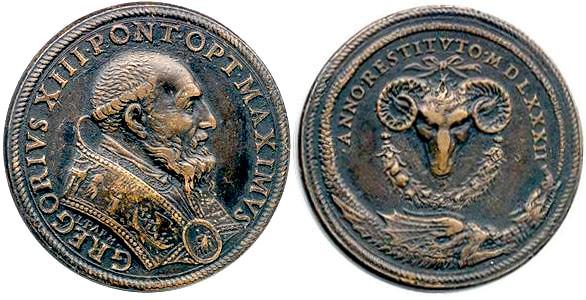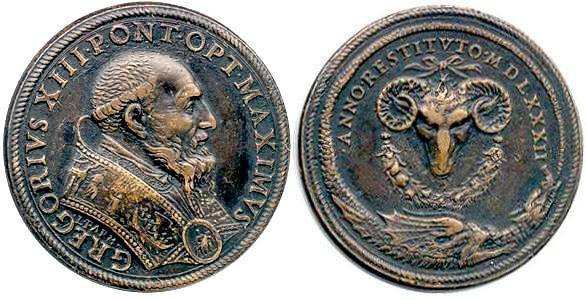Aslında dünya tarihinde hiç yaşanmadan atlanan 10 gün var. Nasıl olmuş olabilir diyorsanız okuyalım.
Zamanı ölçmek için kullanılan sistemler doğa olaylarına dayalıdır. Ağırlıklı olarak güneş ve ay takvimleri kullanılır. Günümüzde kullandığımız güneş takvimine geçiş Papa GREGORIUS XIII zamanında yapılmıştır.
Bu geçişten önce bir güneş yılı 365 gün olarak alınmış ve her 4 yılda birde 25 Şubat’ı iki gün sayarak artık yıllar toparlanmaya çalışılmıştır. Oysaki bir güneş yılı 365 gün, 5 saat, 48 dakika, 46 saniyedir. Bu, yüzyılda bir günlük oynama yapar. Papa XIII Gregorius’a gelindiğinde 1582 -yılında- geçen günleri düzeltebilmek için 4 Ekim 1582’de verilen emirle ertesi günün tarihi 10 gün ilerletilerek 15 Ekim 1582 olarak kabul edildi. İlginç değil mi?
Google’da aramanız için ingilizce anahtar sözcüklerle -araştırmaya alışalım değil mi 🙂 –
http://www.google.com/search?q=XIII+Gregorius++days+dropped+calendar&complete=1&hl=en&lr=&start=10&sa=N

The Gregorian Calendar (Kaynak: Wikipedia)
Gregory XIII is best known for his reformation of the calendar, producing the Gregorian calendar with the aid of Jesuit priest/astronomer Christopher Clavius.It was invented in Rome, Italy. The reason for the reform is that the average length of the year in the Julian Calendar was too long, and the date of the actual Vernal Equinox had slowly slipped to March 10, whereas the computus (calculation) of the Easter date of Easter still followed the traditional date of March 21.This was rectified by following the observations of Clavius and Johannes Kepler, and the calendar was changed when Pope Gregory XIII decreed that the day after October 4, 1582 would be October 15, 1582. He issued the papal bull Inter gravissimas to promulgate the new calendar on February 24, 1582. On October 15, 1582, this calendar replaced the Julian calendar, in use since 45 BC, and has become universally used today.
The switchover was bitterly opposed by much of the populace, who feared it was an attempt by landlords to cheat them out of a week and a half’s rent. However, the Catholic countries of Spain, Portugal, Poland, and Italy complied. France, some states of the Dutch Republic and various Catholic states in Germany and Switzerland (both countries were religiously split) followed suit within a year or two, and Hungary followed in 1587.
Because of the Pope’s decree, the reform of the Julian calendar came to be known as the Gregorian calendar. However, the rest of Europe did not follow suit for more than a century. Denmark, the remaining states of the Dutch Republic, and the Protestant states of the Holy Roman Empire and Switzerland adopted the Gregorian reform in 1700-1701. By this time, the calendar trailed the seasons by 11 days. Great Britain (and its American colonies) finally followed suit in 1752, and Wednesday, September 2, 1752 was immediately followed by Thursday, September 14, 1752; they were joined by the last Protestant holdout, Sweden, on March 1, 1753.
The Gregorian Calendar was not accepted in eastern Christendom for several hundred years, and then only as the civil calendar. The Gregorian Calendar was instituted in Russia by the communists in 1917, and the last Eastern Orthodox country to accept the calendar was Greece in 1923.
While some Eastern Orthodox national churches have accepted the Gregorian Calendar dates for “fixed” feasts (feasts that occur on the same date every year), the dates of all movable feasts (such as Easter) are still calculated in the Eastern Orthodox Churches by reference to the Julian Calendar.













Hep düşünüp duruyordum bunu….
Birde 1 günün 23 saat 56 dakika oluşu var..